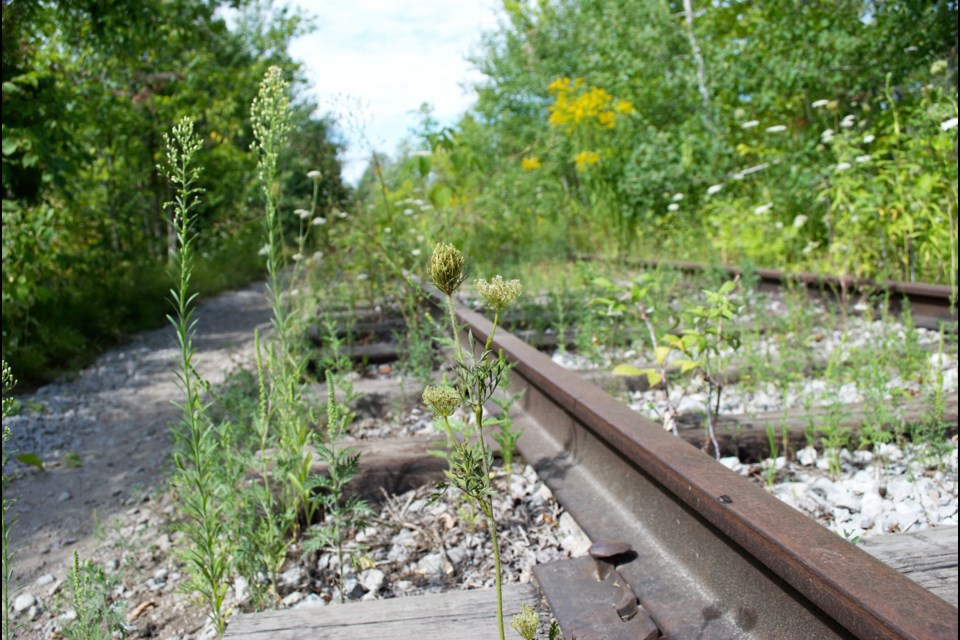The future of how heavily Barrie will be involved with the Barrie-Collingwood Railway (BCRY) is being investigated by city staff after a recent report suggested the municipality re-evaluate its current arrangement.
BCRY is a short-line railway that was purchased from Canadian National (CN) Rail in the 1990s by the Town of Collingwood and the City of Barrie. In 2017, Simcoe County purchased Collingwood's portion.
Barrie owns, operates and maintains 35 kilometres of active rail in Innisfil, Barrie and Essa Township.
Stephannie Schlichter, the city's director of economic development, says Barrie owns the line from the Utopia Yard all the way through the city.
“We also share 50/50 ownership just of the rail yard in Utopia with the County of Simcoe, which is approximately 10 acres,” Schlichter told BarrieToday.
A market feasibility study, ordered by a previous council, was done with the county on the future of rail. After that, Deloitte completed a report (Service Delivery and Modernization Review) at the end of November 2019 that recommended the city look into reducing its responsibility for rail operations over the long term and immediately implement financial improvement measures to reduce the city’s fiscal obligations to BCRY.
Total annual revenues are around $300,000, while maintenance and upgrade costs are approximately $330,000.
The report said BCRY is costing the city money and the municipality should pursue ways to reduce its fiscal responsibility for the rail.
It also came with some suggestions.
“One was to divest completely. Another was to look at increasing business on the line and the other was to find a way to diversify our ownership,” Schlichter said. “That could mean working with those who use the line, (and) working with the county as co-owner to see if there is a way we can share some of that fiscal responsibility.”
Last week, the city issued a request for proposals (RFP) seeking a consultant to assist in providing a business-case analysis on the second and third options, as option one is not feasible, given that the current model is not fiscally sustainable for the city.
“At the end of the day, we have some users on the line in both Innisfil and Barrie that bring in bulk goods. Some of them have the rail cars come straight into their property,” Schlichter said. “We certainly want to look at ways to support our industry and see if we can manage our fiscal investment into the rail.”
Four industrial customers use BCRY services, averaging approximately 220 carloads per year. Commodities shipped include bulk clays, chemicals, industrial products, and oversize structures.
One additional company has added carloads to the line, projected to increase volume from 120 to 150 carloads per year.
Two of the current users — one located in Barrie and the other in Innisfil — have indicated a dependence on the rail line as being critical to their business operations.
In order to get BCRY's revenue to the point where it would exceed operational and capital costs, at least three new customers would be needed, the 82-page report says. It also suggests the city's growing manufacturing sector could tie in well to the long-term goal of increasing traffic.
Schlichter says she's unsure which way the city will go with the railway, but said Barrie is heavily invested in rail and she sees its benefits.
“Rail cars typically hold about two and half times more than a transport, so from an efficiency of moving goods or volume of trucks, there is opportunity there,” she said. “The viability and how to best maximize its use is what we’re investigating right now.”
CANDO Rail is the contracted operator for the rail line. It employs five people and provides freight service two to three times a week.
The rail line runs west out of the city, parallel to Tiffin Street, toward the Utopia Yard. In Barrie, it connects with several potential users, including businesses in the Tiffin and Anne street area, before coming up to the Allandale Waterfront GO station. The line also continues into the south end in the area of Big Bay Point Road and Huronia Road.
The report also notes the potential for interchanges between CN and BCRY on Metrolinx's Barrie line. However, the likelihood "seems slim" given the current traffic.
Upgrades to BCRY's infrastructure could attract new customers, but would require up-front spending and long-term maintenance, says the report.
The rail service allows for the transportation of goods across Canada and the United States by seamlessly feeding into the trunk networks of the major railway: Canadian Pacific (CP). The line also has running rights to CN Rail.
The interchange with CP is located at the Utopia Yard, an 11-acre site that can support loading and other support services. There are currently 33 crossings (15 active and 18 passive), four customer sidings, and three spurs along the line.
The Utopia Yard is located beside the CP interchange and splits what was formerly the Collingwood portion from Barrie's. The former Collingwood portion of the tracks are only used for car storage.
— With files from Raymond Bowe
